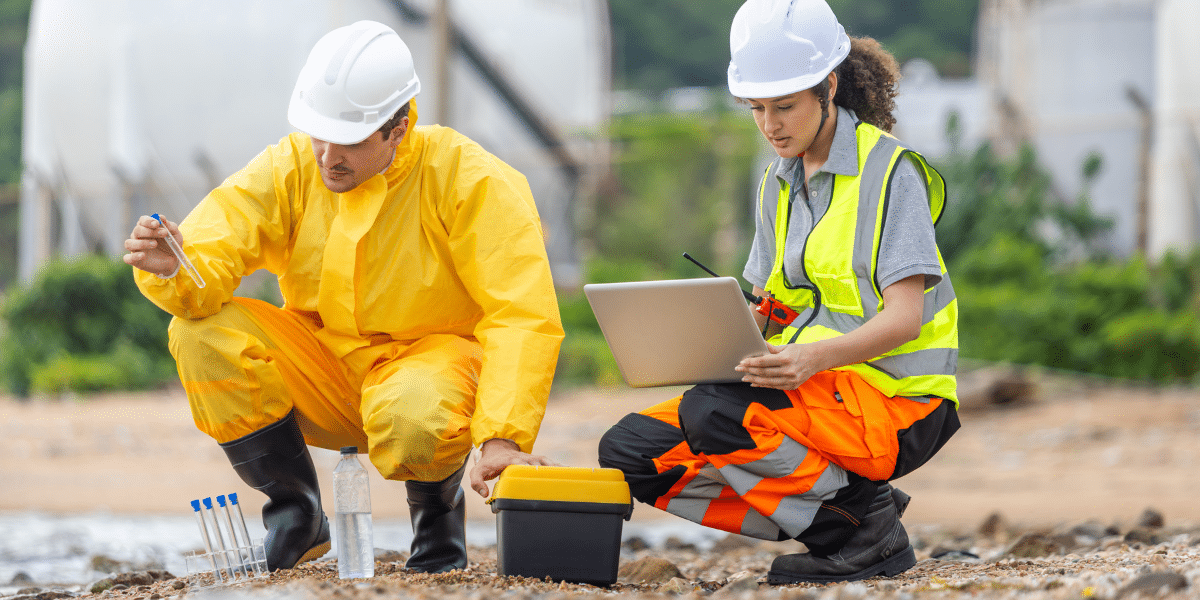
Material Processing for Environmental Remediation Projects
Environmental remediation projects have one main goal: remove, stabilize, or neutralize contaminants so the land can be used again without causing new problems. The work varies from site to site (soil type, contaminant behavior, regulations, etc.) but good material processing stays at the center of most successful cleanup jobs. When the materials aren’t processed right, results tend to be inconsistent in the field.
What is Environmental Remediation?
Environmental remediation refers to the steps taken to reduce or neutralize contaminants in soil, groundwater, or surface materials so a site can return to safer use. The work starts with identifying what pollutants are present and how they move through the soil or water. From there, the team selects a treatment method suited to the conditions at that site.
Most projects focus on soil because it holds contaminants and can move them deeper or farther if left untreated. The quality of the materials used (and how they are processed before they reach the field) plays a major role in how well the treatment performs.
What Happens in Environmental Remediation Projects
These projects usually start with sampling and identifying what contaminants are present. From there, the team figures out how those contaminants move and what method can bring the site back within regulatory limits. Contaminants can include:
- Petroleum hydrocarbons
- Heavy metals (lead, arsenic, chromium, etc.)
- Volatile organic compounds (VOCs)
- PFAS and emerging contaminants
- Excess nutrients or salts
- Industrial residues from manufacturing, mining or chemical operation
Depending on the site, cleanup might involve digging out soil, treating it in place, cleaning water, or doing long-term monitoring. But almost all of it still relies on materials (absorbents, binders, amendments, reactive blends, and powders) that need proper processing before they ever hit the ground.
Material Processing in Soil Remediation
Soil remediation depends heavily on having the right material at the right particle size, moisture content, and blend ratio. The performance of remediation amendments is directly tied to processing quality. Here are the most common ways material processing impacts project outcomes:
1. Particle Size Reduction & Grinding
Many amendments work better when ground fine. Clay minerals, lime, and engineered absorbents usually perform well in the 50-200 micron range. Activated carbon may run 30-100 mesh, depending on the job.
2. Custom Blending for Contaminant-Specific Solutions
Different contaminants will require different amendment mixes. For example:
- Phosphate binders, lime, or clays for heavy metals
- Organophilic clays or biological additives for hydrocarbons
- High-calcium materials with buffers for acidic soils
3. Dewatering & Drying
Many remediation materials arrive with too much moisture for proper spreading/mixing. Moisture control also affects flowability, since high humidity can cause clumping or bridging in augers and feeders. Drying helps stabilize the material, improves flow characteristics, and ensures it can be metered accurately during application. Some remediation crews also mix dry blends with water to create a pumpable slurry for spray or injection work, so consistent particle size and steady flow behavior help the material move through pumping systems without issues.
4. Screening for Consistent Distribution
Screening removes oversize particles and ensures uniformity. Consistent particle size improves soil contact and prevents clumping during application.
5. Mixing & Homogenization
Each batch should match the last. Some processors aim for a tight particle distribution curve and even bulk density so the material behaves predictably.

Soil Amendments Commonly Used in Environmental Remediation
The amendment itself matters just as much as the processing. Here are some commonly used ones:
- Clay minerals (including bentonite and engineered clays) for binding contaminants
- Lime and cementitious materials for pH control and stabilization
- Activated carbon for VOC and organic contaminant adsorption
- Phosphate-based binders for heavy metal immobilization
- Biochar and organic additives to support biological degradation
- Iron-based reagents for reductive dechlorination
- Absorbent powders for spill response and hydrocarbon capture
Each of these requires careful processing to ensure they behave predictably once mixed with contaminated soil. Some amendments can interact poorly if combined too early, so proper storage and sequencing help prevent premature reactions.
How These Materials Support Remediation Work
Material processing supports remediation on many different types of projects:
Industrial Site Remediation
Old manufacturing facilities, refineries, and chemical plants often have complex contamination profiles. Custom-blended mixes allow engineers to target multiple contaminants simultaneously.
Agricultural Land Rehabilitation
Some soils accumulate excess fertilizers or pesticide residues. Amendments help restore structure and balance.
Mine Sites & Tailings Stabilization
Material processing helps produce large volumes of stabilizing agents and pH modifiers for mine reclamation.
Brownfield Redevelopment
For redevelopment projects, processed remediation materials improve safety and help meet regulatory thresholds needed for commercial/residential reuse.
Water Treatment & Sludge Solidification
Processed powders are used to absorb, bind, or neutralize contaminants in water treatment settings.
Best Practices When Selecting Materials for Environmental Remediation Projects
When selecting materials for soil remediation, it helps to keep a few things in mind:
- Consistency. Are the materials processed to a uniform particle size?
- Compatibility. Does the amendment match the contaminant chemistry?
- Application Equipment. Will it flow cleanly through spreaders, injectors, or mixers?
- Compliance. Does the amendment meet environmental standards?
- Logistics. Does the processor offer packaging suitable for jobsite needs (bulk bags, super sacks, small bags)?
Read now: How to Choose the Right Contract Manufacturing Partner
Environmental Remediation Support from M&M Milling
M&M Milling supports these projects with toll manufacturing services designed specifically for soil remediation and site cleanup work. This includes custom grinding and size reduction, screening and classification, drying, blending, and packaging services. If you’re supporting a project like industrial cleanup or agricultural rehabilitation, M&M Milling can help you develop the processed materials needed for reliable remediation results!
If you need help with toll processing for remediation work, contact our team today.